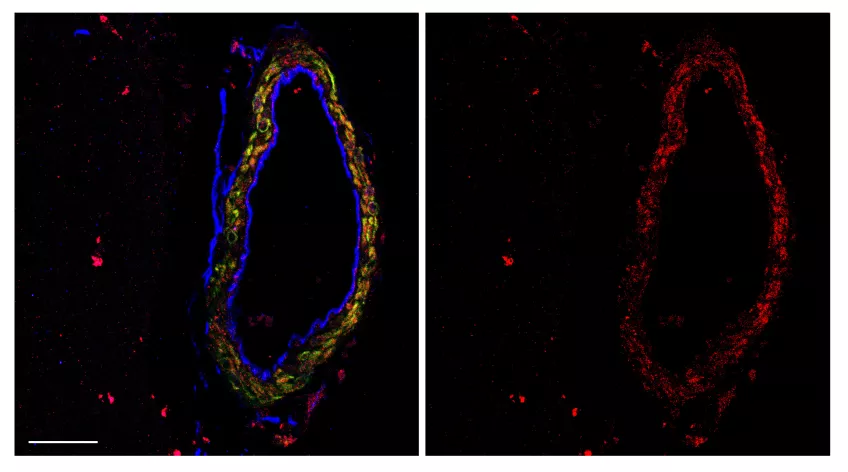An increased risk of dementia among individuals exposed to brain trauma, traumatic brain injury, has been known for almost a century. Still, we know very little about the molecular causes behind this, which makes it difficult to find effective treatments to prevent dementia development among those affected with traumatic brain injury. However, a research team at MultiPark, Lund University argues that the blood vessels in the brain hold the keys to future therapies.
Brain trauma usually impairs cerebral blood flow, possibly through pathological changes in the vascular smooth muscle cells in the vascular wall. These blood flow impairments can lead to secondary brain injuries, worsening the damage to the brain, although it remains unknown exactly how this occurs.
To bridge this gap, Niklas Marklund, professor at Lund University and neurosurgical consultant at Skåne University hospital, decided to take a deeper look into the molecular details together with the experimental scientist Ilknur Özen. In collaboration with Uppsala University, they investigated brain tissue from 15 patients, surgically removed due to bleeding and swelling within a week following their traumatic brain injuries. They found that the changes in the vascular smooth muscle cells coincided with increased aggregation of amyloid-beta, a protein linked to Alzheimer’s disease.
"We were surprised to see that even young patients displayed this accumulation of amyloid beta together with the vascular alterations caused by the brain trauma", says Ilknur Özen, first author of the study. She continues: “Our findings suggest that vascular changes may be more important for neurodegeneration than previously thought.”
Niklas Marklund adds: “This challenges the existing paradigm in neurodegeneration-related diseases by indicating that vascular dysfunction could be an early event that triggers the progression of amyloid-related diseases rather than being caused by neuronal damage.”
While ageing leads to functional changes in the vasculature, brain trauma may exacerbate and accelerate these processes even in younger patients. Still, far from everybody affected by brain trauma develops Alzheimer’s disease. That is why more research is needed.
“We are not there yet, but hopefully, increased knowledge about what happens at a molecular level in the blood vessel cells following brain trauma will open up possibilities for novel treatments,” concludes Niklas Marklund.

